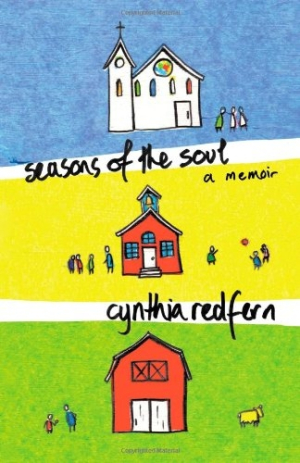Seasons of the Soul
A Memoir
Many people who have led so-called ordinary lives tend to consider their experiences too mundane to write about. In truth, every person’s story is unique, and readers often find value in learning how fellow humans have coped with challenges in their lives.
Cynthia Redfern couldn’t justify writing her personal story until friends urged her to do so. Seasons of the Soul starts with her birth, in 1942, during a German bombing attack on London. Her memories of sunny days, outdoor play, and pretty dresses brighten but don’t obscure that perilous beginning or the negative effects of her selfish older brother, Sam, repeated abuse from his friend, and the premature death of her mother. These formative events give Redfern a fierce determination to make the most of her life. Eventually, she marries, and she and her new husband, David, relocate to Canada where they begin a family, cope with his debilitating illness, and learn to survive on sometimes meager income. Now widowed and retired, she lives near her children and grandchildren.
After her mother dies, the teenaged Redfern begins to hear noises in the house that cause her cat to hiss and snarl. Family members assure her that nothing is wrong, but one sleepless night she wanders downstairs and overhears the grownups talking about their own frightening experiences. She realizes they’d followed the usual family pattern of not being entirely truthful with her. “Apparently, strange things were happening to the adults as well, and Sam was half scared out of his wits,” she writes.
Redfern gives birth to two children, and she and David adopt two children of color. The second adopted infant, Susan, seems entirely undisturbed by noises. Tests indicate that she is deaf, but, by the age of eleven months, she responds to sounds and soon hears normally. As her children mature, Redfern begins working with developmentally challenged adults.
The night of Victoria Day, a national holiday in Canada, Redfern returns to her office to complete some reports. When the evening fireworks commence, a loud noise outside her window startles her and she panics. She writes, “This fear was something that must have been embedded in my subconscious since my days as a small child in World War II.” Redfern’s unexpected reaction helps her understand how much she’d suppressed unpleasant childhood experiences.
Writing in a conversational style, the author’s perceptive thoughts gained from facing personal challenges add depth to this memoir. However, descriptive detail, while pertinent to her story, sometimes fails to sustain reader interest. Typographical errors, repetition of facts, and fondness for clichés indicate a further lack of editorial review. Frequent apologies for telling aspects of her story out of chronological order grow tiresome.
This overall idiosyncratic approach reflects Redfern’s intent to write her memoir primarily for her children, grandchildren, and future descendants. Still, the story of the author’s development into a mature, self-confident adult may appeal to readers outside of her family who enjoy human-interest stories.
Reviewed by
Margaret Cullison
Disclosure: This article is not an endorsement, but a review. The publisher of this book provided free copies of the book and paid a small fee to have their book reviewed by a professional reviewer. Foreword Reviews and Clarion Reviews make no guarantee that the publisher will receive a positive review. Foreword Magazine, Inc. is disclosing this in accordance with the Federal Trade Commission’s 16 CFR, Part 255.

